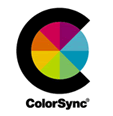| Monday, February 25, 2002 |
10:08 - I promise you this won't hurt-- much...
http://www.zdnet.com/anchordesk/stories/story/0,10738,2849950,00.html
|
(top)  |
The latest installment in Project Coursey: David gives us a realistic look at just how much pain a Windows user would be in for if he decided to go Mac. (Answer: it "requires an open mind and about a week of regular use.") It's a fair and even-handed article, and it has such gems as:
Which machine to suggest depends on a few factors--for example, your son's major. Why does this matter? Well, if he's majoring in graphic design or photography and you buy him a Windows machine, you're a borderline bad father.
However, like most ZDNet articles, the biggest thing that I find objectionable is the TalkBack responses. Why do I torment myself by reading these things? No matter how well worded or fair the article is, the TalkBack people will insist upon blasting any pro-Mac points it makes and cast aspersions upon the origins of any subversive impetus for the articles being written in the first place. Lots of Mac people are there too, but they don't ever seem to bring up the most compelling points-- or if they do, they're buried deep in the threads, and how are you supposed to find them, let alone guarantee that everyone will see them?
What irks me in this case is that while Coursey firmly recommends the Mac for its graphics capabilities and the advantages it offers graphics professionals, the TalkBack is full of people saying that Windows is every bit as capable as the Mac at doing Photoshop.
Yes. BUT.
(Leaving aside the post I made yesterday about Photoshop-- or maybe even taking it into account. Either way...)

There's a very important feature of the Mac that both Coursey and the TalkBackers seem to have missed out on mentioning, and that feature is ColorSync. ColorSync is what makes the graphics industry possible, and it is only possible on the Mac.
ColorSync is a scheme by which your graphics apps embed a color-matching profile into your image files that describes the display capabilities and settings of your monitor; and then when a remote recipient views the file, ColorSync takes the profile for his monitor, matches it up against the embedded profile from your monitor, and adjusts the display output so it appears identically on his monitor as it does on yours. Any program that runs through the standard graphics routines-- Mail, Preview, TextEdit, OmniWeb, etc-- applies your built-in ColorSync profile to each picture that has a profile embedded, so you know that what you're seeing is what the creator intended. When I view Lileks.com in OmniWeb, I know I'm seeing the same color balance that Lileks is.
Likewise, printers are color-matched through ColorSync profiles. Anybody who has ever spent hours and hours working in Photoshop to get the colors just right on a picture, then sent it to the printer's, only to have it come back all dark or washed-out (I saw this happen on a t-shirt design recently), will understand precisely why Macs are still the industry standard for publishing and printing. It's all about ColorSync.
Windows doesn't have any equivalent technology, because Microsoft can't guarantee anything about what kind of display device you're using. There is no such structure in the OS. It just isn't there. Apple and Mac-compatible monitors are regarded as being higher-quality (and more expensive) because they follow the guidelines that make it possible for ColorSync to work with them. (Apple CRTs recalibrate themselves over time to keep their output aligned and their ColorSync profiles matched, just as an example of what makes them different.)
Of course, there are a few other things I might mention:
- Custom icons enable you to see what each picture file is without having to open or preview it. Yes, I know Windows 2000 has that "Thumbnails" view now, but that's not the same thing. It's nowhere near as versatile. It's like bolting a spoiler onto your Civic and saying "See? it's just like a Countach now!"
- Type and Creator codes are a big part of what makes the graphics industry possible. Being able to associate certain files with Photoshop and others with GraphicConverter and still others with MSIE is of absolutely crucial importance. OS X has the "open with application" association, which provides similar functionality. Windows XP seems to have some rudimentary capability to do this too, now, but if anyone's going to claim that XP is equally capable because you can select from a list of programs called IEXPLORE, NOTEPAD, MSCVT32, DICAM_a3, and WINWORD, then I'm not going to be able to overcome you with reason and will have to resort to fisticuffs.
It strikes me as odd that so many people so regularly describe the Mac OS as being the superior platform for graphics, but when challenged by a Windows user to prove it, have no idea how. And in fact I'm sure I'm forgetting something major myself (like maybe the fact that Macs are as ubiquitous in graphics as Windows is in business, and if you go into a printing or graphics studio with a file created on Windows, they will charge you extra for the hassle of making the file usable). But these are a few of the reasons that spring to mind. If only it were more obvious that there's more difference in the technology than simply having the menu bars in a different place.
|
|


